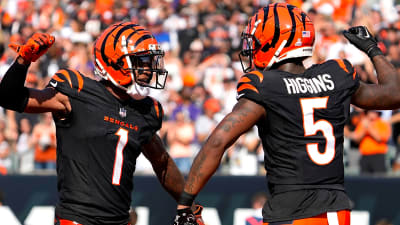
It was a long journey for Brazil to finally receive an NFL game. Decades of development, learning, and absorbing a sport that was never part of the culture, but that has been more and more popular, culminated in the league's decision to expand their international series to São Paulo in 2024.
"There's a lot of interest in the NFL. I mean, we saw it. We did a Super Bowl viewing party last year down in Brazil," NFL executive vice president Peter O'Reilly said on Adam Schefter's podcast. "It was packed and the energy is there."
How it got started
If watching football is natural for Americans, it's a feat for Brazilians. The first NFL broadcasts in Brazil happened in 1969, when CBS used to send game tapes to the defunct TV Tupi. Obviously, there wasn't access to live games. In the 1980s and 1990s, TV Bandeirantes, a broadcast television channel, covered important games, mostly some editions of the Super Bowl. A Brazilian version of ESPN started broadcasting the NFL with regularity in 1992.
But by the 1990s and early 2000s, cable TV in Brazil was not that popular, and ESPN broadcasted just a few games per week (Sunday and Monday Night Football).
There were, though, two explosions in popularity. One, minor, in the 2000s. And then a big one in the 2010s, making Brazil the third NFL market in the world, just behind the United States and Mexico. The league counts 38 million fans in Brazil.
"Football has been growing significantly here in Brazil, even though it is obviously a country primarily focused on soccer," said Fernando Ferreira, founder of Pluri Consultoria, a Brazilian consulting firm specializing in sports studies, research, and analysis. "This has a direct relationship with the broadcasts that have been happening for quite some time, especially the Super Bowl, which is a global mega-event and becomes very appealing. The broadcasts play a fundamental role in spreading the sport."
Football growth in Brazil has a direct relationship with cable TV popularization. The more people had access to ESPN, the more they had access to NFL games, even if sporadically, and the game started to become well known.
In the 2010s, ESPN started to broadcast several games per week. All three primetime night games, plus three to four Sunday afternoon games. Over the last decade, broadcast channels also tried some weekly games, even though the NFL still seems like a niche audience at this point.
Development process
In Brazil, Tom Brady was known as "Gisele's husband", and that fact is a famous joke among Brazilian NFL fans. For many people, football was (and still is to some degree) seen as a violent sport. But there are also many factors helping popularize the sport. The cultural internationalization allowed by technology and the increased cost of in-person soccer attendance and consumption made the NFL a viable alternative.
"Brazilians are passionate about team sports. That was an entry point," highlights Rafael Belatinni, NFL color commentator for ESPN Brazil. "Another aspect is the declining quality of Brazilian soccer, coupled with the appeal of a sport that has so many intricacies that it's rare to witness a boring game. Even a lackluster NFL game carries anticipation about a third down, the risk of attempting a fourth. It's much easier to come across a boring soccer game than in the NFL."
It's still a process, obviously, but the growth has clear results. Since 2013, Brazil has one player in the league — current Chicago Bears kicker Cairo Santos. Defensive and offensive lineman Durval Queiroz Neto started playing football in Brazil and spent three seasons on the Miami Dolphins practice squad as part of the International Pathway Program.
"In Brazil, everyone is born knowing soccer," Belatinni adds. "But the tactical aspect was very rarely discussed until recently, and some found in football an oasis where tactics are seen as something very, very important."
Another step
With an NFL regular season game in Brazil, the sport's popularity has a chance at reaching new levels. Which is already a big market for the league can become even more relevant.
"The trend, from the moment you have the possibility of bringing a spectacle of this magnitude to a soccer stadium here in Brazil, allows us to foresee that it will be a great success, a smart marketing move," Fernando Ferreira mentioned. "The path opens up space for continuous growth if this becomes an annual event. People's perception and interest will reach a new level."
Thirty years ago, it was almost impossible to have access to games. Right now, it's almost impossible to avoid having some kind of contact with football, and that trend will become even more pronounced over the next couple of years. Brazil is, now, a football country too.
More must-reads:
- Steelers reward GM Omar Khan after busy offseason
- NFL Draft intel: Peyton Manning praises these SEC QBs
- The 'NFL head coaches' quiz
Breaking News
Trending News
Customize Your Newsletter
 +
+
Get the latest news and rumors, customized to your favorite sports and teams. Emailed daily. Always free!








